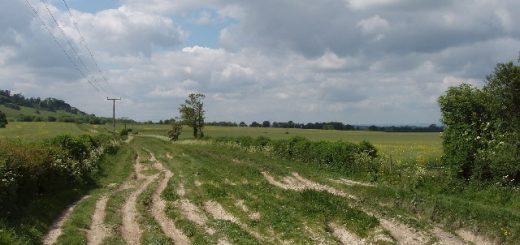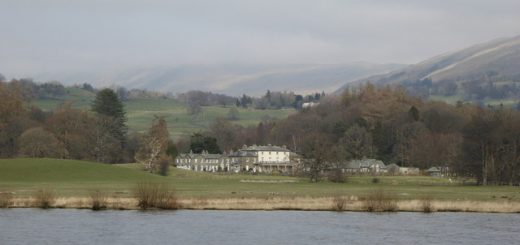Mannington Hall
Mannington Hall is a Grade II listed large moated house dating from 1460 with later additions from around 1864. In 1879 the house was the reputed scene of a strange experience witnessed by Dr Augustus Jessopp (Born 20 December 1823 – Died 12 February 1914) and the following account is taken from ‘The Haunted Homes and Family Traditions of Great Britain’ by John Ingram (1897).
 Whether Lord Orford’s Norfolk residence has the general reputation of being haunted, or whether the occasion of the much-talked-of spectral illusion to Dr. Augustus Jessop is the only known instance of an apparition having appeared there, we are not in a position to state. The remarkable story, as communicated by Dr. Jessop, the well-known antiquary, to the Athenceum of January 1880, is as follows.
Whether Lord Orford’s Norfolk residence has the general reputation of being haunted, or whether the occasion of the much-talked-of spectral illusion to Dr. Augustus Jessop is the only known instance of an apparition having appeared there, we are not in a position to state. The remarkable story, as communicated by Dr. Jessop, the well-known antiquary, to the Athenceum of January 1880, is as follows.
On the 10th of October 1879, Dr. Jessop drove to Lord Orford’s from Norwich. It was his intention to spend some time at the Hall in examining and making extracts from various scarce works, which he had long been seeking for, and which he now learnt were in Lord Orford’s library.
He arrived at Mannington at four in the afternoon, and, after some agreeable conversation, dressed for dinner. Dinner took place at seven, and was partaken of by six persons, including Dr. Jessop and his host. The conversation is declared to have been of a pleasant character, to have been chiefly concerned with artistic questions, and the experiences of men of the world, and to have never trenched upon supernatural subjects. After dinner cards were introduced, and at half-past ten, two of the guests having to leave, the party broke up. Dr. Jessop now desired to be permitted to sit up for some hours, in order to make extracts from the works already referred to. Lord Orford wished to leave a valet with his guest, hut the doctor deeming that this might embarrass him, and cause him to go to bed earlier than he wished, requested to be left to his own devices. This was agreed to, the servants were dismissed, and the host and his other guests retired to their rooms, so that by eleven o’clock Dr. Jessop was the only person down-stairs.
The apartment in which he was preparing to set to work for a few hours is a large one, with a huge fireplace ‘and a great old-fashioned chimney, and is furnished with every luxury. The library, whence Dr. Jessop had to bring such volumes as he needed, opens into this room, and in order to obtain the works he wanted he had not only to go into it, but when there to mount a chair to get down the books he required. In his very circumstantial account of the affair, the antiquary relates that he had altogether six small volumes, which he took down from their shelves and placed in a little pile on the table, at his right hand. In a little while he was busily at work, sometimes reading, sometimes writing, and thoroughly absorbed in his occupation. As he finished with a book he placed it in front of him, and then proceeded with the next, and so on until ho had only one volume of his little pile of tomes left to deal with. The antiquary being, as he states, of a chilly temperament, sat himself at a corner of the table with the fire at his left. Occasionally he rose, knocked the fire together, and stood up to warm his feet. In this manner he went on until nearly one o’clock, when he appears to have congratulated himself upon the rapid progress lie had made with his task, and that after all he should get to bed by two. He got up, and wound up his watch, opened a bottle of seltzer-water, and then, reseating himself at the table, upon which were four silver candlesticks containing lighted candles, he set to work upon the last little book of the heap. What now happened must be told in Dr. Jessop’s own words:
“I had been engaged upon it about half an hour,” said he, referring to the little volume, “and was just beginning to think that my work was drawing to a close, when, as I was actually writing, I saw a large white hand within a foot of my elbow. Turning my head, there sat a figure of a somewhat large man, with his back to the fire, bending slightly over the table, and apparently examining the pile of books that I had been at work upon. The man’s face was turned away from me, but I saw his closely-cut reddish-brown hair, his ear, and shaved cheek, the eye-brow, the corner of the right eye, the side of the forehead, and the large high cheek-bone. He was dressed in what I can only describe as a kind of ecclesiastical habit of thick-corded silk, or some such material, close up to the throat, and a narrow rim or edging, of about an inch broad, of satin or velvet, serving as a stand-up collar, and fitting close to the chin. The right hand, which had first attracted my attention, was clasping, without any great pressure, the left hand; both hands were in perfect repose, and the large blue veins of the right hand were conspicuous. I remember thinking that the hand was like the hand of Velasquez’s magnificent ‘Dead Knight’ in the National Gallery. I looked at my visitor for some seconds, and was perfectly sure that he was not a reality. A thousand thoughts came crowding upon me, but not the least feeling of alarm, or even uneasiness ; curiosity and a strong interest were uppermost. For an instant I felt eager to make a sketch of my friend, and I looked at a tray on my right for a pencil; then I thought, ‘Up-stairs I have a sketch-book shall I fetch it?’
There he sat, and I was fascinated; afraid not of his staying, but lest he should go, ” Stopping in my writing, I lifted my left hand from the paper, stretched it out to the pile of books, and moved the top one. I cannot explain why I did this my arm passed in front of the figure, and it vanished. I was simply disappointed and nothing more. I went on with my writing as if nothing had happened, perhaps for another five minutes, and had actually got to the last few words of what I had determined to extract, when the figure appeared again, exactly in the same place and attitude as before. I saw the hands close to my own; I turned my head again to examine him more closely, and I was framing a sentence to address him when I discovered that I did not dare to speak. I was afraid of the sound of my own voice. There he sat, and there sat I. I turned my head again to my work, and finished writing the two or three words I still had to write. The paper and my notes are at this moment before me, and exhibit not the slightest tremor or nervousness. I could point out the words I was writing when the phantom came, and when he disappeared. Having finished my task, I shut the book, and threw it on the table; it made a slight noise as it fell the figure vanished.
“Throwing myself back in my chair, I sat for some seconds looking at the fire with a curious mixture of feeling, and I remember wondering whether my friend would come again, and if he did whether he would hide the fire from me. Then first there stole upon me a dread and a suspicion that I was beginning to lose my nerve. I remember yawning; then I rose, lit my bedroom candle, took my books into the inner library, mounted the chair as before, and replaced five of the volumes; the sixth I brought back and laid upon the table where I had been writing when the phantom did me the honour to appear to me. By this time I had lost all sense of uneasiness. I blew out the four candles and marched off to bed, where I slept the sleep of the just or the guilty I know not which but I slept very soundly.”
And that is the conclusion of the story, so far as Dr. Jessop’s published account goes, Numerous elucidations have been attempted by the wise, and the otherwise; but whether hallucination, spectral illusion, or trickery, no one has been enabled to prove, and as the hero of the tale declines to proffer explanation, theory, or inference, the affair continues to be a mystery.
The following link is to a PDF of an 1894 book by Lady Dorothy Nevill and entitled ‘Mannington and the Walpoles‘. It mentions Dr Jessop and his own written history entitled ‘One Generation of a Norfolk House.’ Lady Nevill’s book also includes photographs of Mannington Hall and various rooms including the library.




Recent Comments